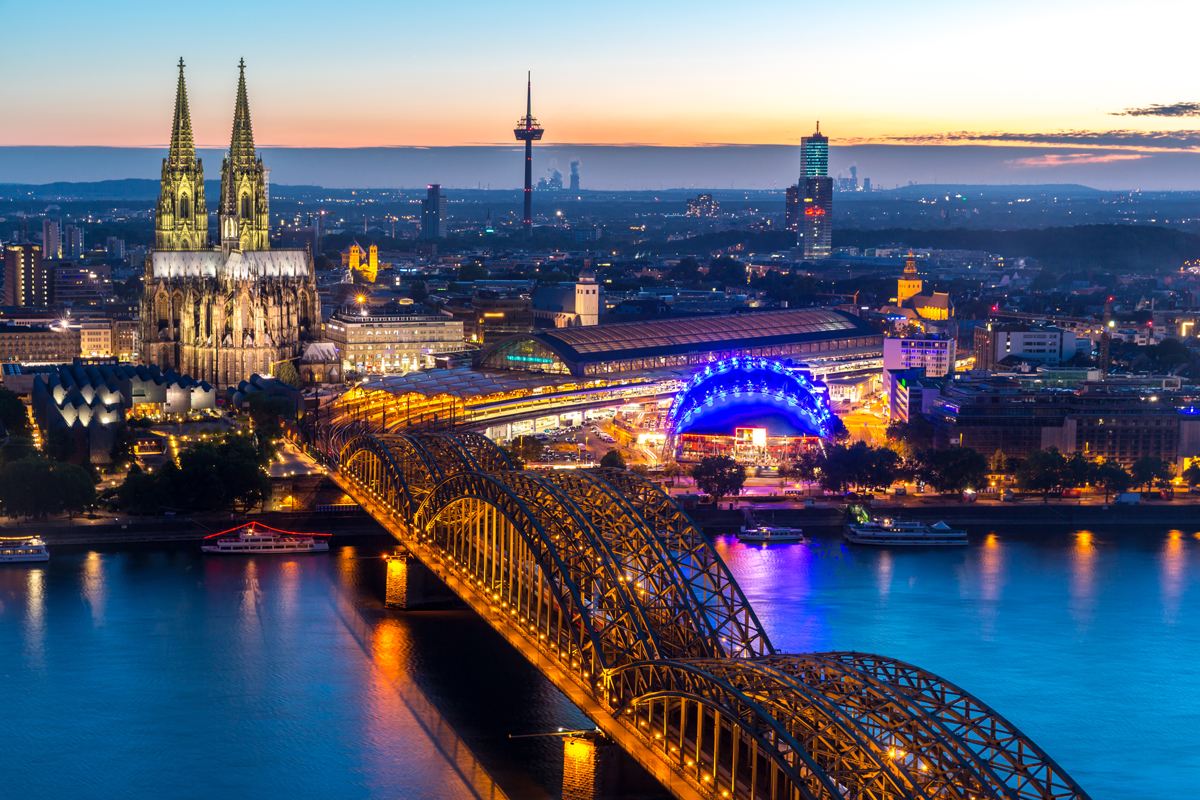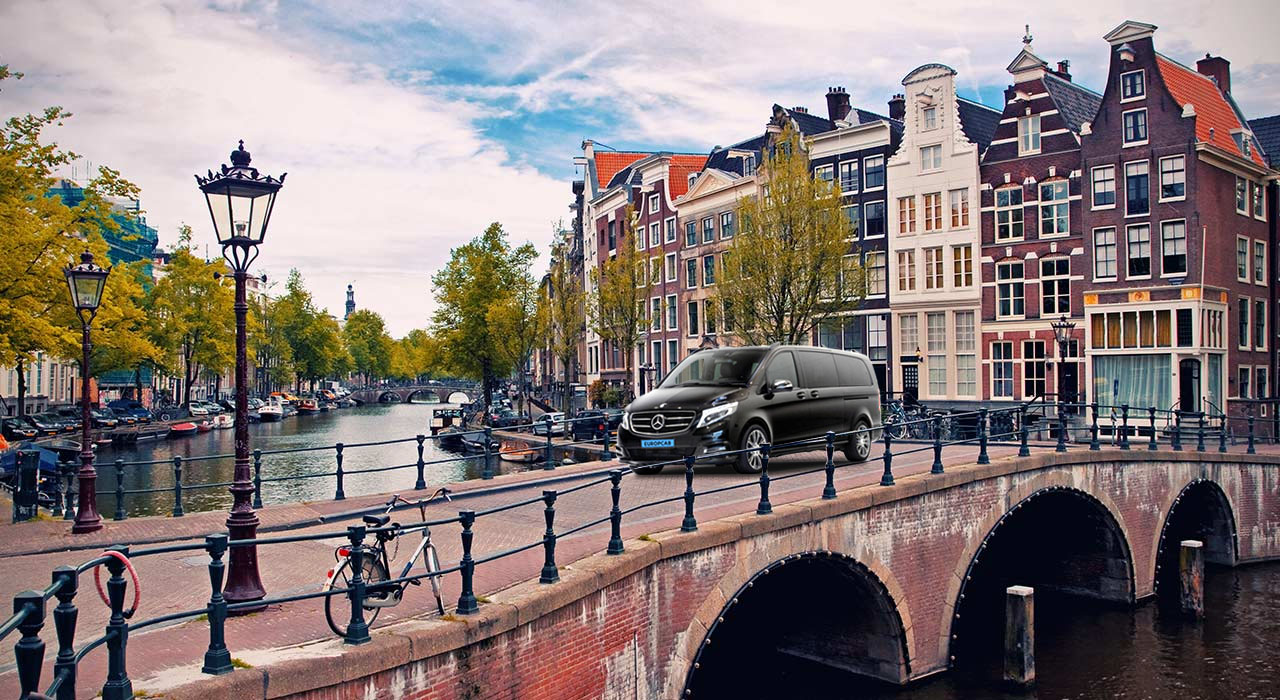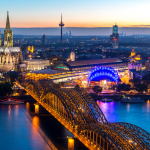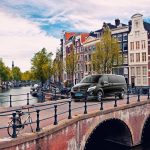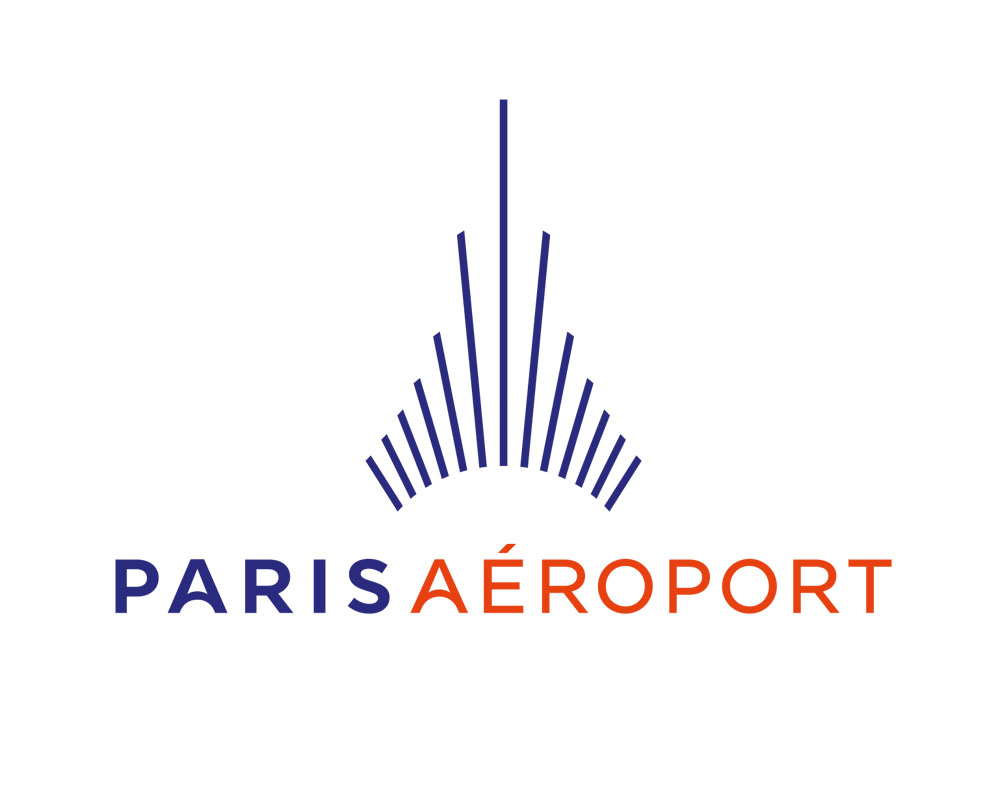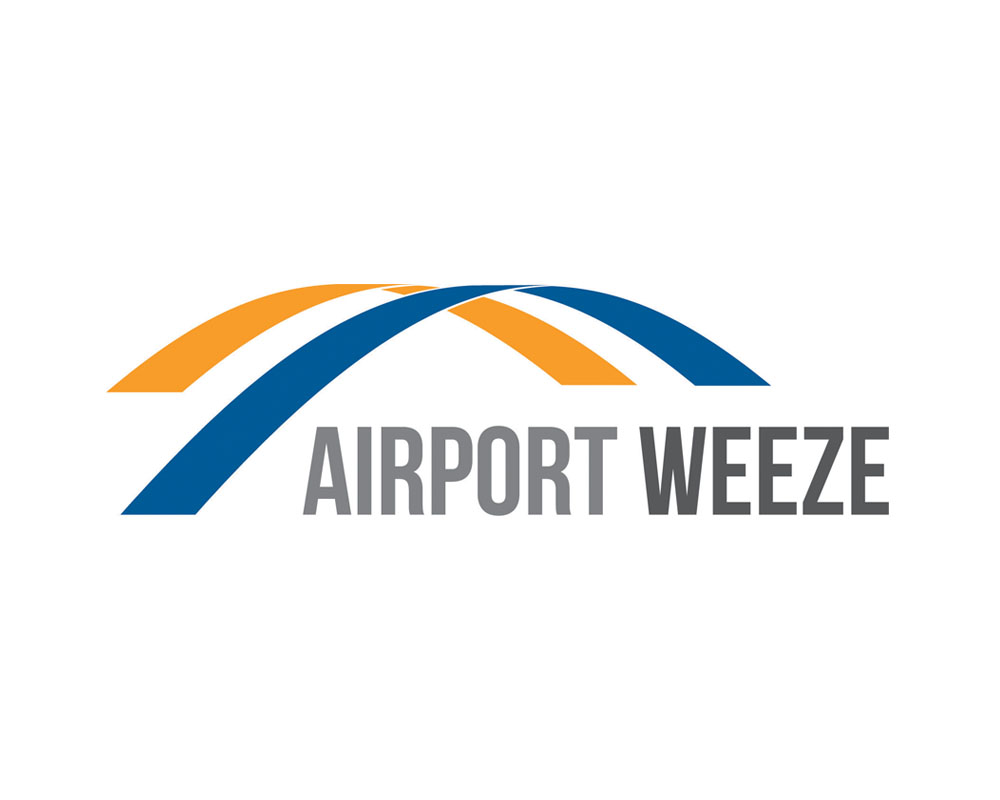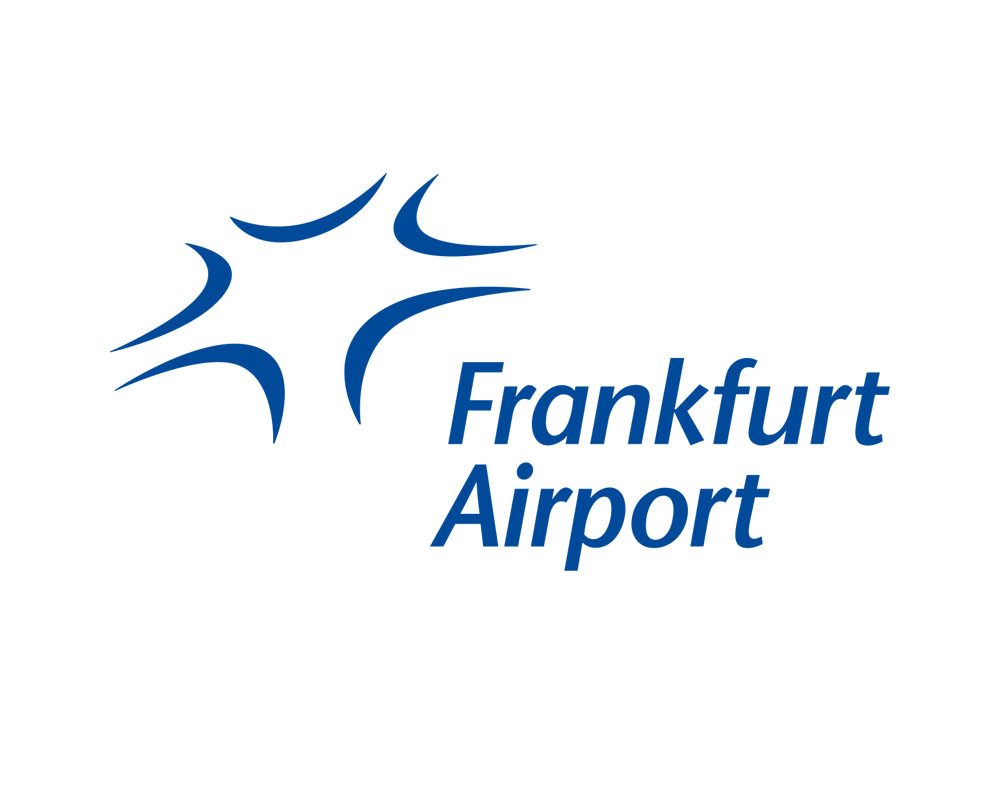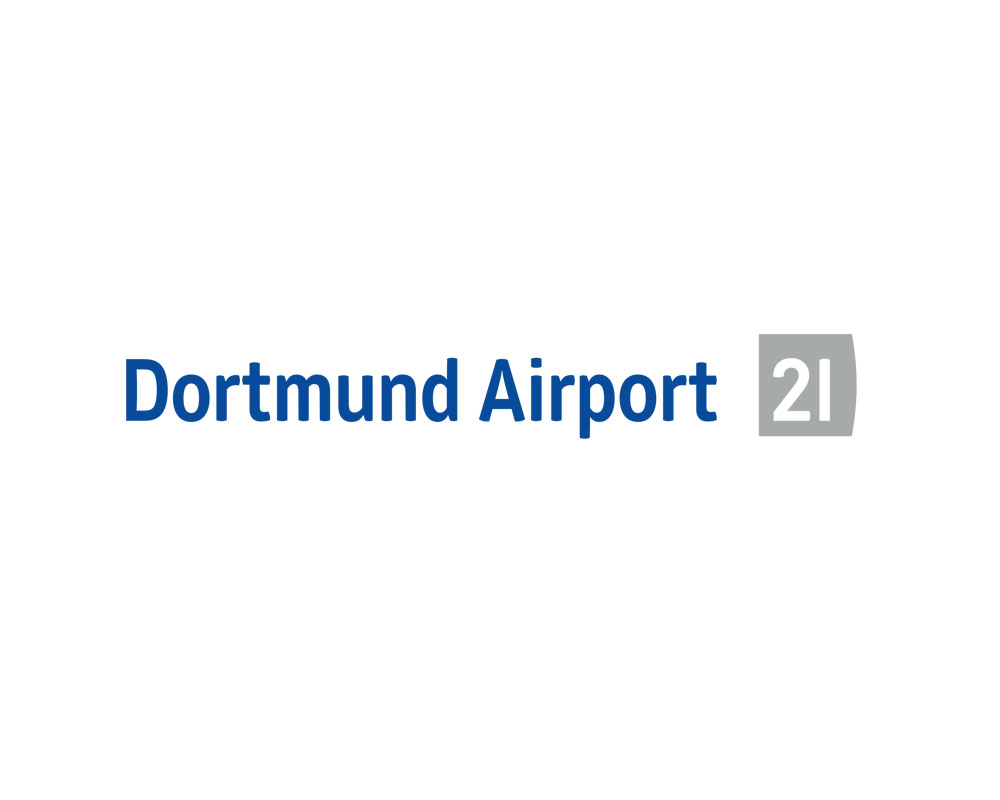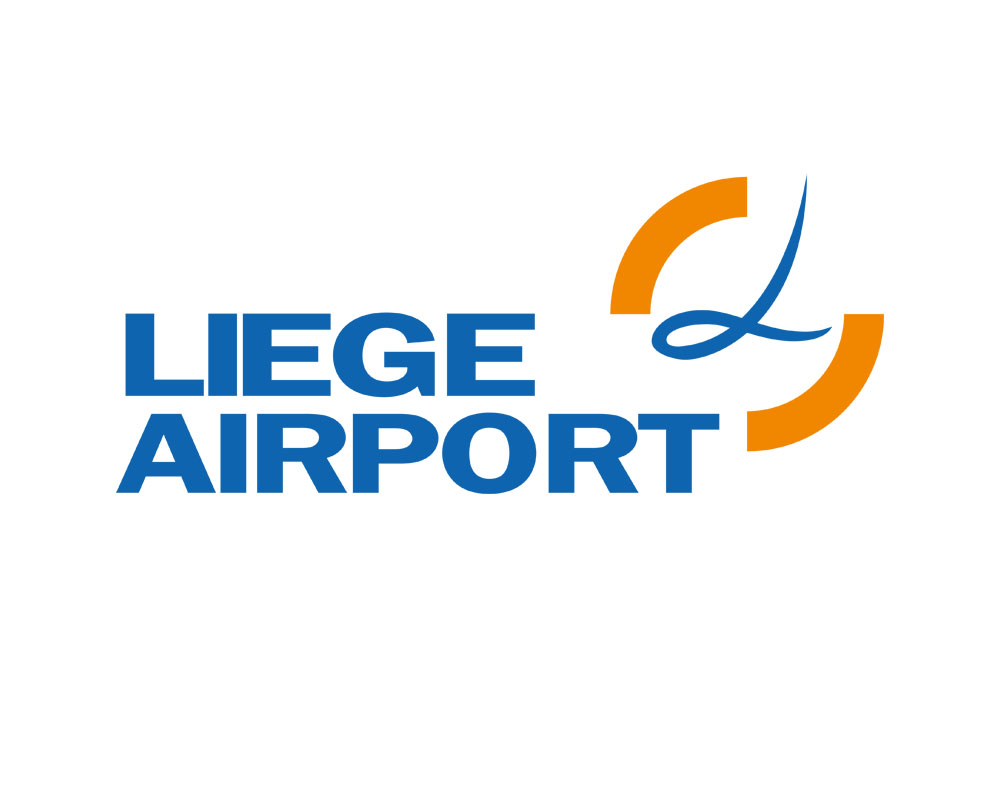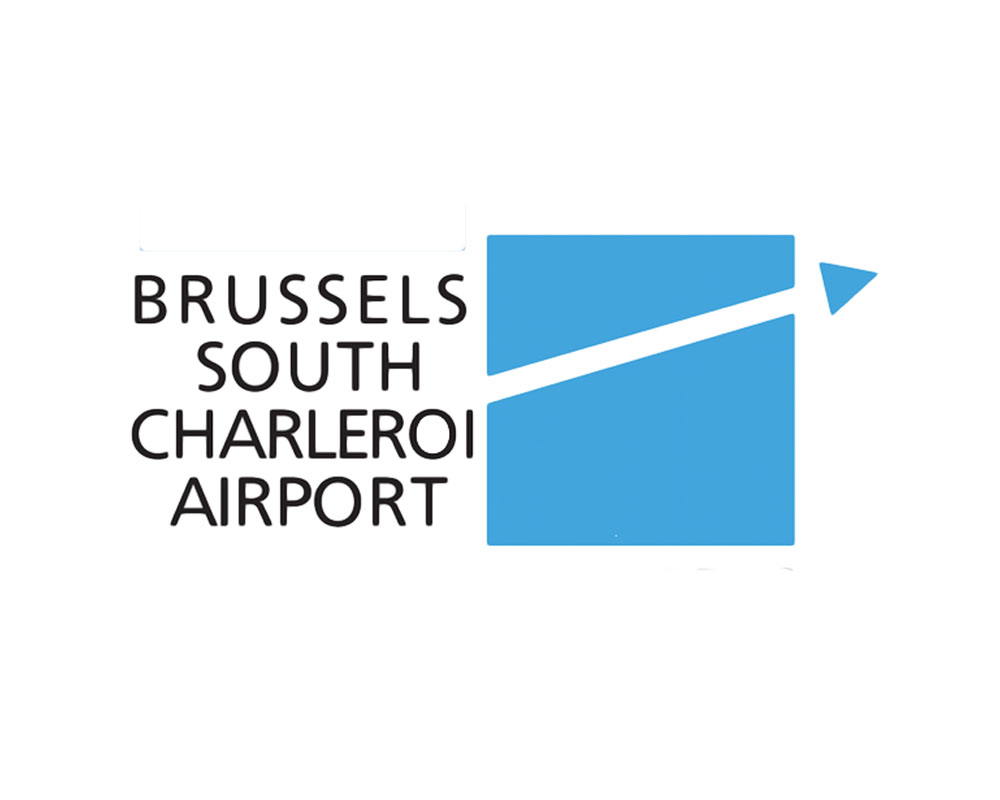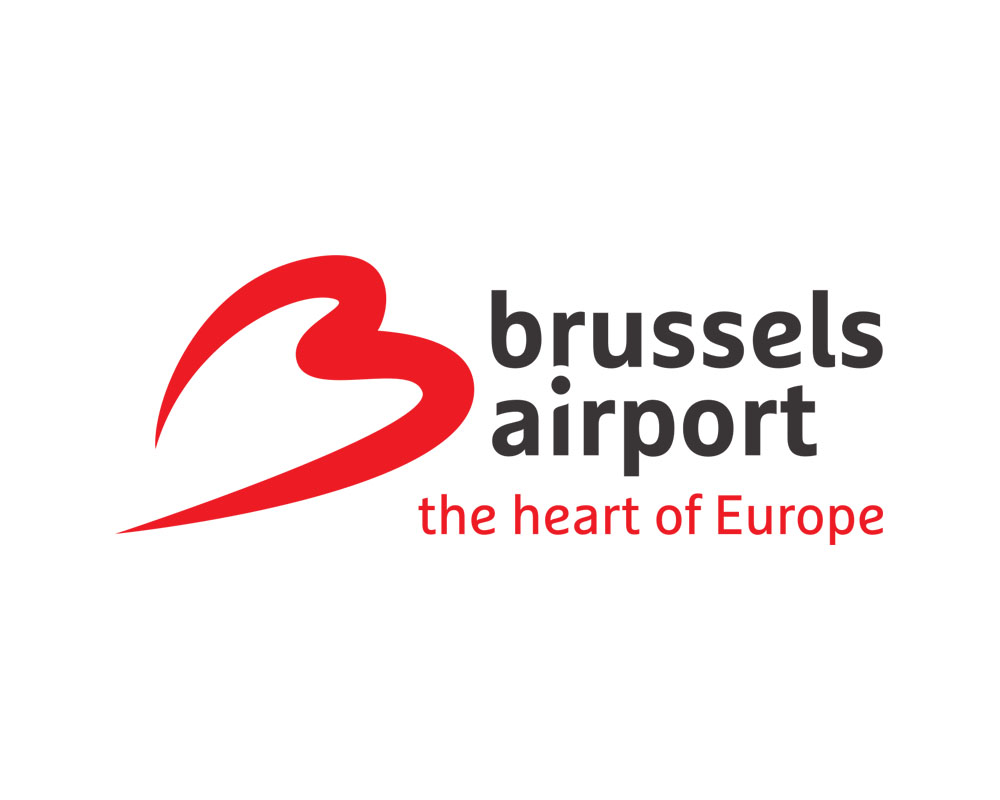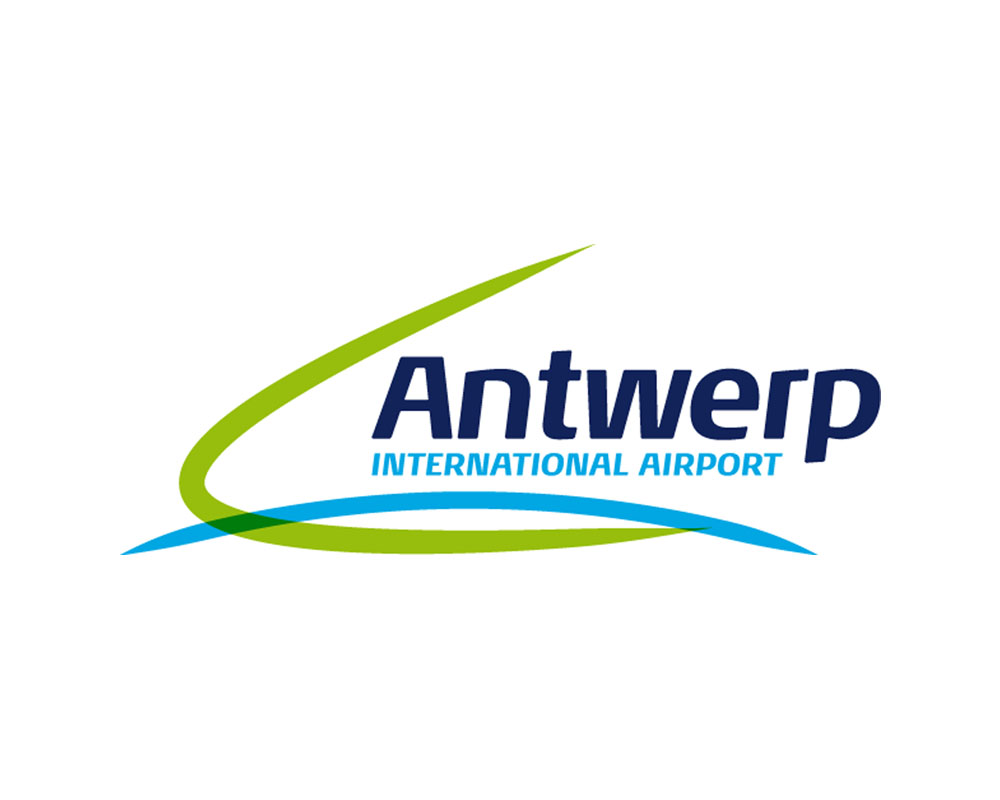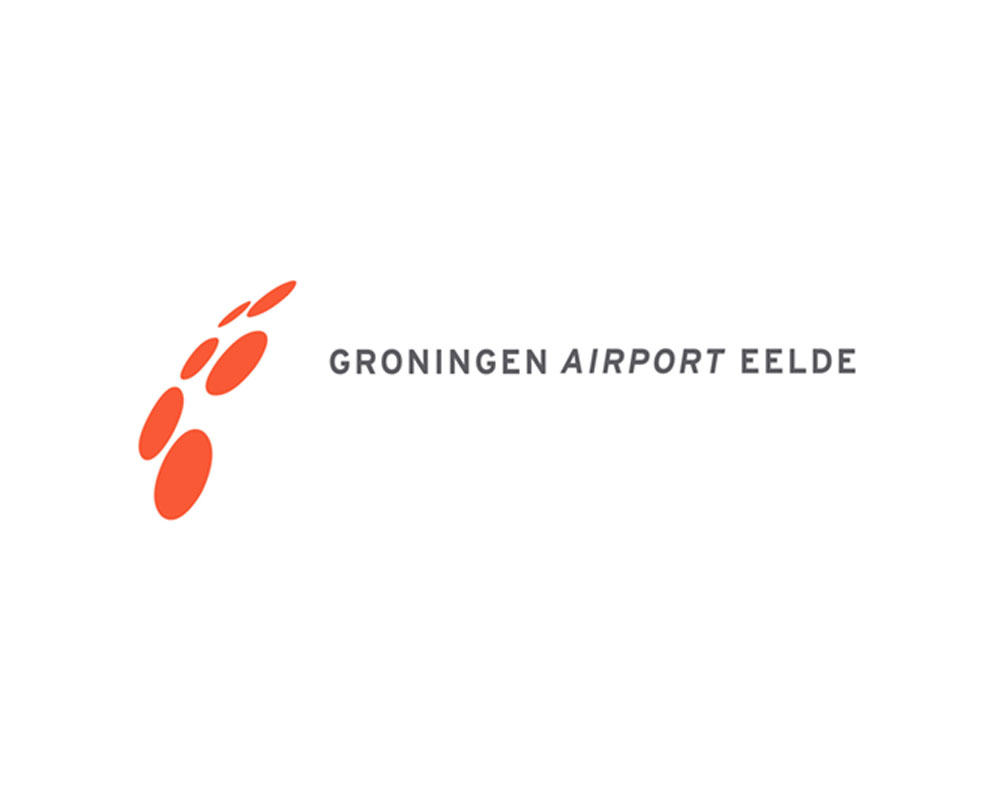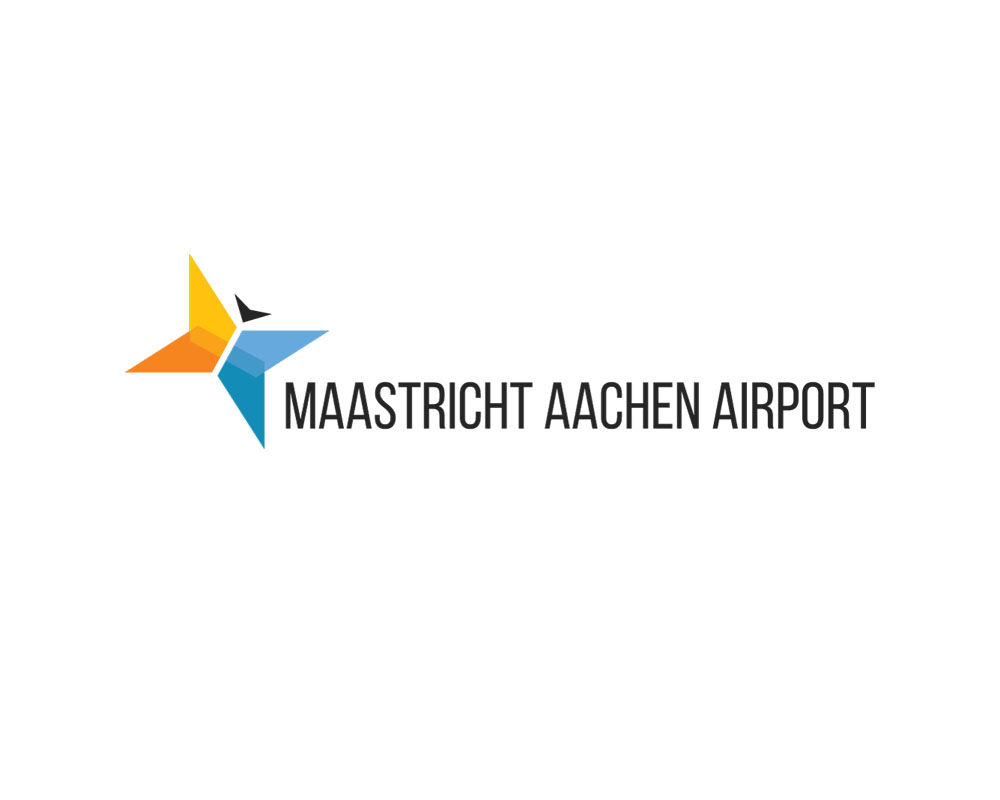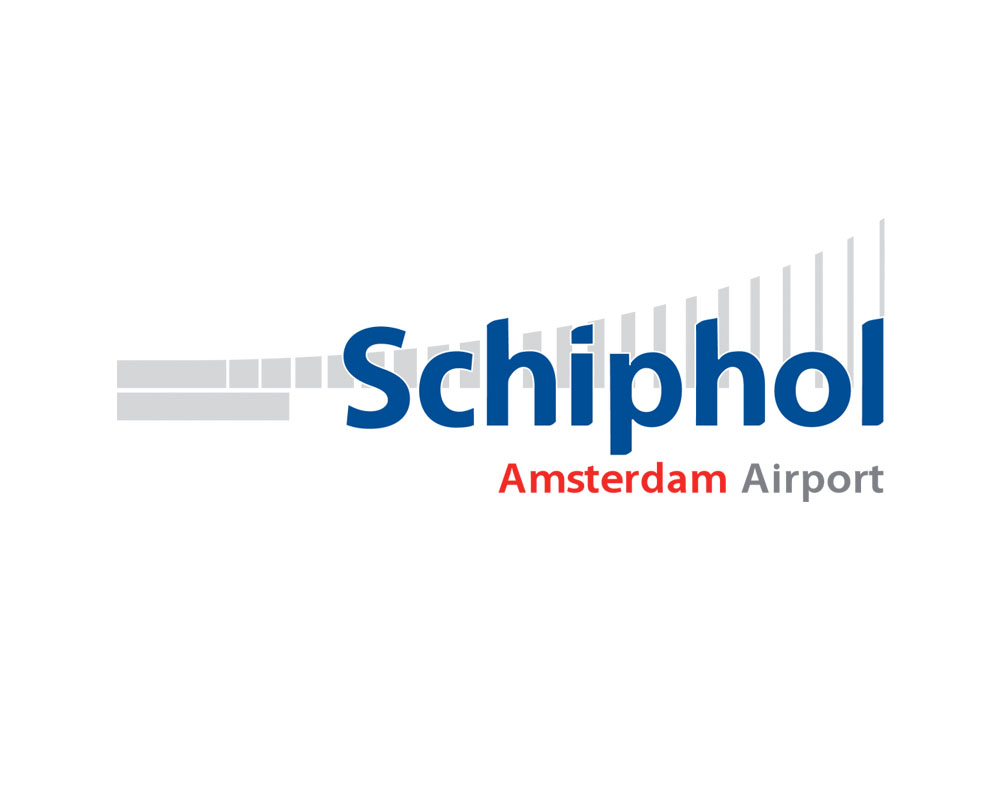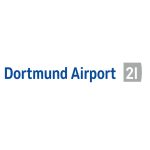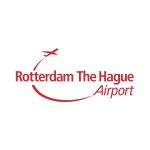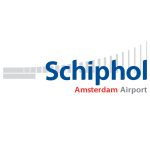Info
Description
The Hague or Den Haag is a city on the western coast of the Netherlands and the capital of the province of South Holland. It is also the seat of government of the Netherlands.With a metropolitan population of more than 1 million, it is the third-largest city in the Netherlands, after Amsterdam and Rotterdam. The Rotterdam–The Hague metropolitan area, with a population of approximately 2.7 million, is the 13th-largest in the European Union and the most populous in the country. Located in the west of the Netherlands, The Hague is in the centre of the Haaglanden conurbation and lies at the southwest corner of the larger Randstad conurbation. The Hague is the seat of the Cabinet, the States General, the Supreme Court, and the Council of State of the Netherlands, but the city is not the constitutional capital of the Netherlands, which is Amsterdam.[8] King Willem-Alexander lives in Huis ten Bosch[9][a] and works at the Noordeinde Palace in The Hague, together with Queen Máxima. The Hague is also home to the world headquarters of Royal Dutch Shell and other Dutch companies. Most foreign embassies in the Netherlands and 200 international governmental organisations are located in the city, including the International Court of Justice and the International Criminal Court, which makes The Hague one of the major cities hosting a United Nations institution along with New York City, Geneva, Vienna, Rome and Nairobi. Because of this, The Hague is largely known as the home of international law and arbitration.
Book The Hague Tour Hague
Top-rated Sights & Attractions
Madurodam
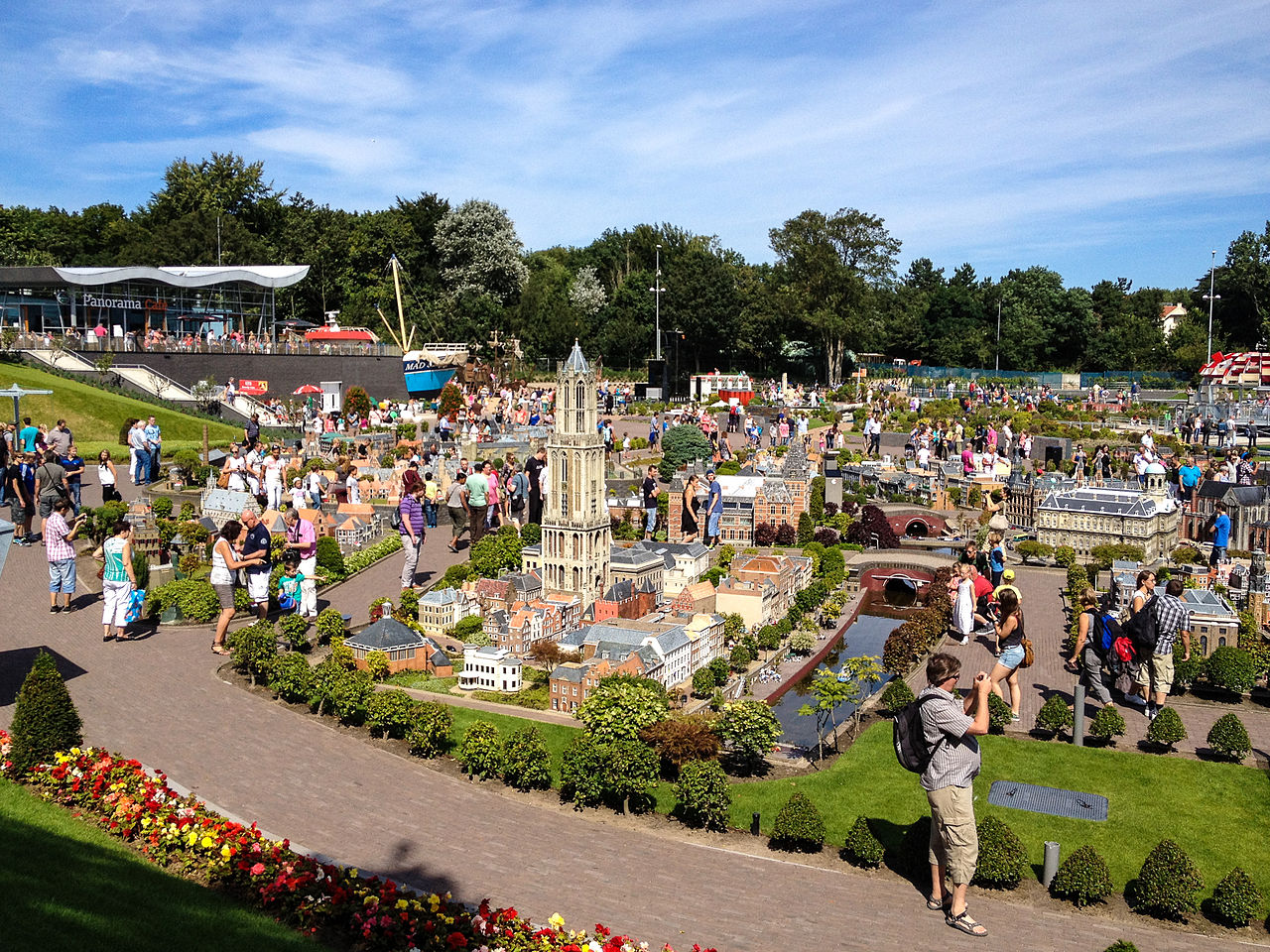 Madurodam is a miniature park and tourist attraction in the Scheveningen district of The Hague in the Netherlands. It is home to a range of 1:25 scale model replicas of famous Dutch landmarks, historical cities and large developments. The park was opened in 1952 and has since been visited by tens of millions of visitors. The entirety of net proceeds from the park go towards various charities in the Netherlands. In 2012, Madurodam celebrated its 60th anniversary. Every object in Madurodam has been built at a scale of 1:25. When the management decides that a specific miniature is to be made for Madurodam, the builders will first research all aspects of the actual building. They will research the shape, color and all other properties of that object, by analysing many pictures. After this they can start making the models. A computer measures everything and sends all information to a machine that makes the physical model. The model goes to the painting room, where it gets the final look. In this painting room restorations also take place. Because most of the miniatures are outdoors, they need regular paint retouches. Although Madurodam is mainly a miniature city, a collection of Dutch landmarks is also found amidst the landscapes. They include:
Madurodam is a miniature park and tourist attraction in the Scheveningen district of The Hague in the Netherlands. It is home to a range of 1:25 scale model replicas of famous Dutch landmarks, historical cities and large developments. The park was opened in 1952 and has since been visited by tens of millions of visitors. The entirety of net proceeds from the park go towards various charities in the Netherlands. In 2012, Madurodam celebrated its 60th anniversary. Every object in Madurodam has been built at a scale of 1:25. When the management decides that a specific miniature is to be made for Madurodam, the builders will first research all aspects of the actual building. They will research the shape, color and all other properties of that object, by analysing many pictures. After this they can start making the models. A computer measures everything and sends all information to a machine that makes the physical model. The model goes to the painting room, where it gets the final look. In this painting room restorations also take place. Because most of the miniatures are outdoors, they need regular paint retouches. Although Madurodam is mainly a miniature city, a collection of Dutch landmarks is also found amidst the landscapes. They include:
- Rijksmuseum
- Binnenhof(where the government is located)
- Amsterdam Airport Schiphol, The Netherlands’ main international airport
- Port of Rotterdam, world’s third-largest port
- Traditional Dutch canal houses
- Tulip fields
- Windmills
- Skyline of the city of Rotterdam, like the Erasmus bridge, Euromast, central train station, cubes houses and Unilever HQ buildings.
Peace Palace
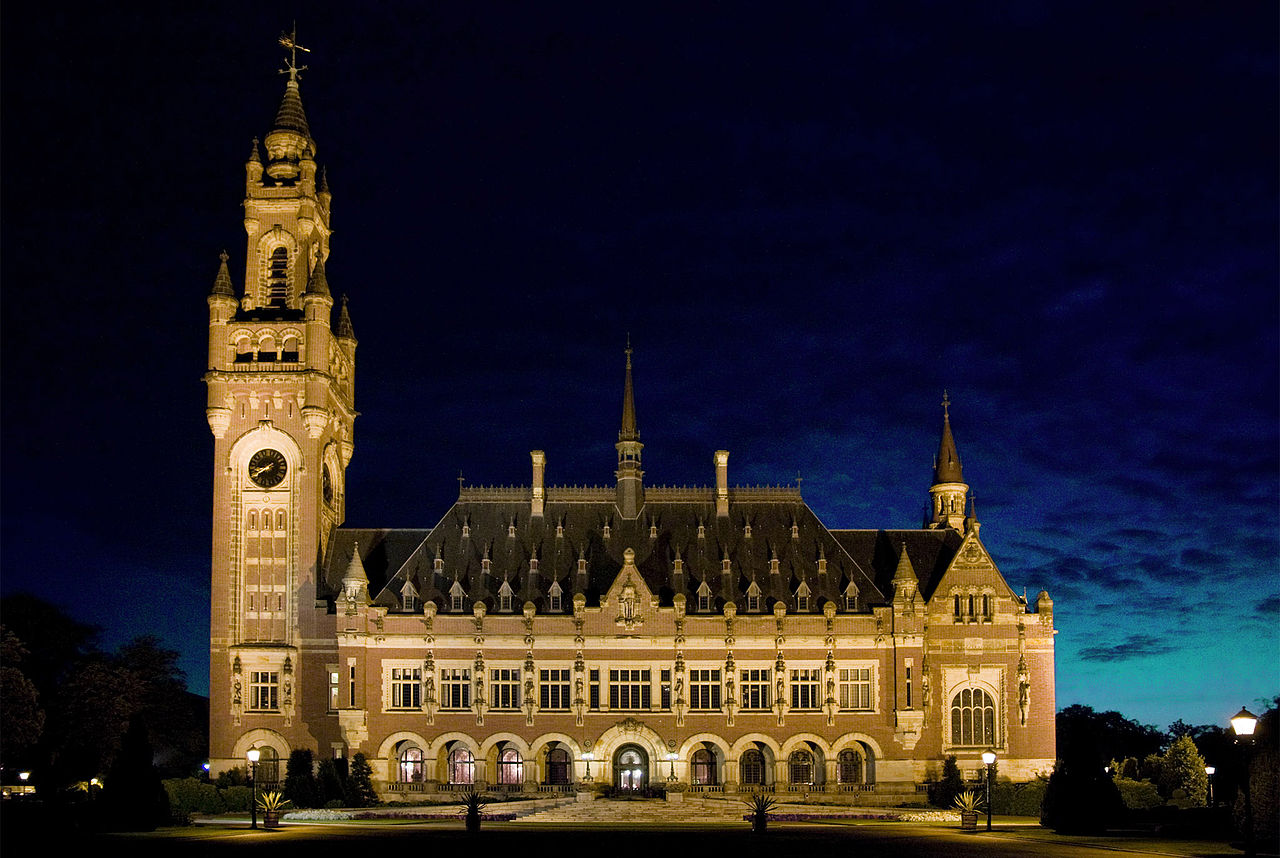
The Peace Palace is an international law administrative building in The Hague, the Netherlands. It houses the International Court of Justice (which is the principal judicial body of the United Nations), the Permanent Court of Arbitration (PCA), the Hague Academy of International Law and the Peace Palace Library.The Palace officially opened on 28 August 1913, and was originally built to provide a home for the PCA, a court created to end war by the Hague Convention of 1899. Andrew Dickson White, whose efforts were instrumental in creating the court, secured from Scottish-American steel magnate Andrew Carnegie US$1.5 million ($40,000,000, adjusted for inflation) to build the Peace Palace. The European Heritage Label was awarded to the Peace Palace on 8 April 2014.
Scheveningen
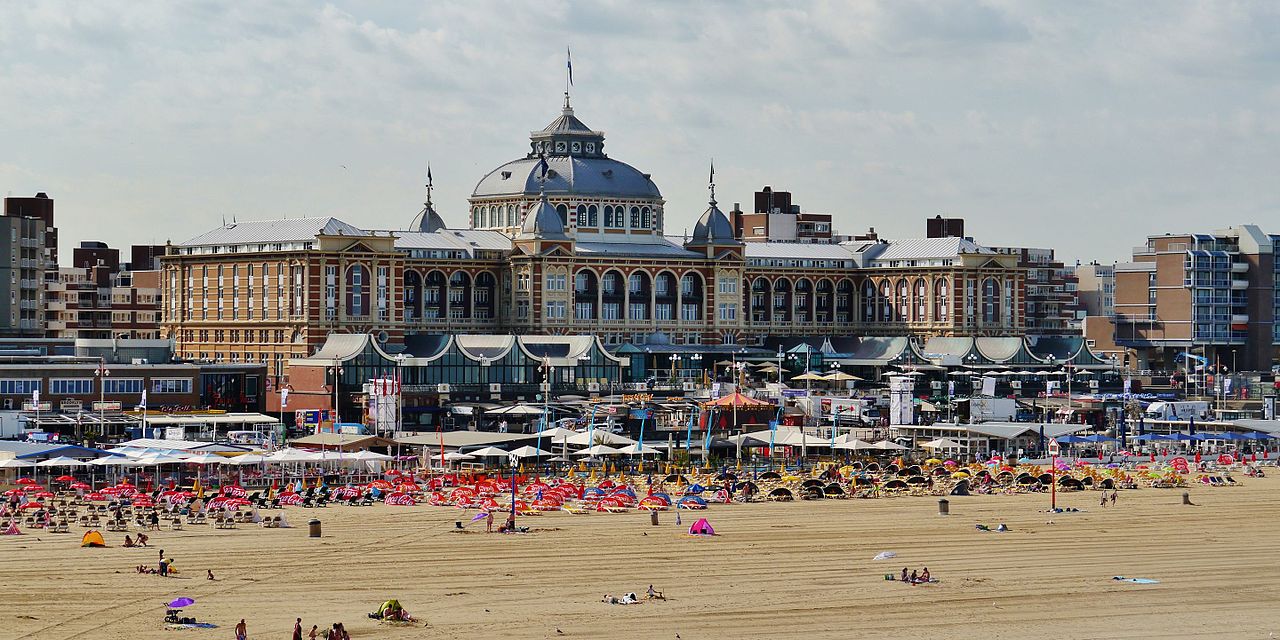 Scheveningen is one of the eight districts of The Hague, Netherlands, as well as a subdistrict of that city. Scheveningen is a modern seaside resort with a long, sandy beach, an esplanade, a pier, and a lighthouse. The beach is popular for water sports such as windsurfing and kiteboarding.The harbour is used for both fishing and tourism. The Scheveningen Resort area is a popular destination during the summer months with both locals and tourists. In addition to being a lovely beach area on the shores of the North Sea, this area is home to several top attractions and things to do, as well as a regular host to several festivals and concerts. Those looking for a unique way to enjoy the view will want to check out SkyView de Pier, a Ferris-wheel style observation wheel, which features gondola cars where tourists can enjoy a meal or even high tea. This sits on the water among many other attractions on this huge pier, which include a zipline, bungee-jumping, and plenty of shopping and restaurants. Another highlight of the Scheveningen area is SEA LIFE Scheveningen, an aquarium featuring a variety of ocean life, including sharks, stingrays, turtles, otters, and penguins.
Scheveningen is one of the eight districts of The Hague, Netherlands, as well as a subdistrict of that city. Scheveningen is a modern seaside resort with a long, sandy beach, an esplanade, a pier, and a lighthouse. The beach is popular for water sports such as windsurfing and kiteboarding.The harbour is used for both fishing and tourism. The Scheveningen Resort area is a popular destination during the summer months with both locals and tourists. In addition to being a lovely beach area on the shores of the North Sea, this area is home to several top attractions and things to do, as well as a regular host to several festivals and concerts. Those looking for a unique way to enjoy the view will want to check out SkyView de Pier, a Ferris-wheel style observation wheel, which features gondola cars where tourists can enjoy a meal or even high tea. This sits on the water among many other attractions on this huge pier, which include a zipline, bungee-jumping, and plenty of shopping and restaurants. Another highlight of the Scheveningen area is SEA LIFE Scheveningen, an aquarium featuring a variety of ocean life, including sharks, stingrays, turtles, otters, and penguins.
Mauritshuis
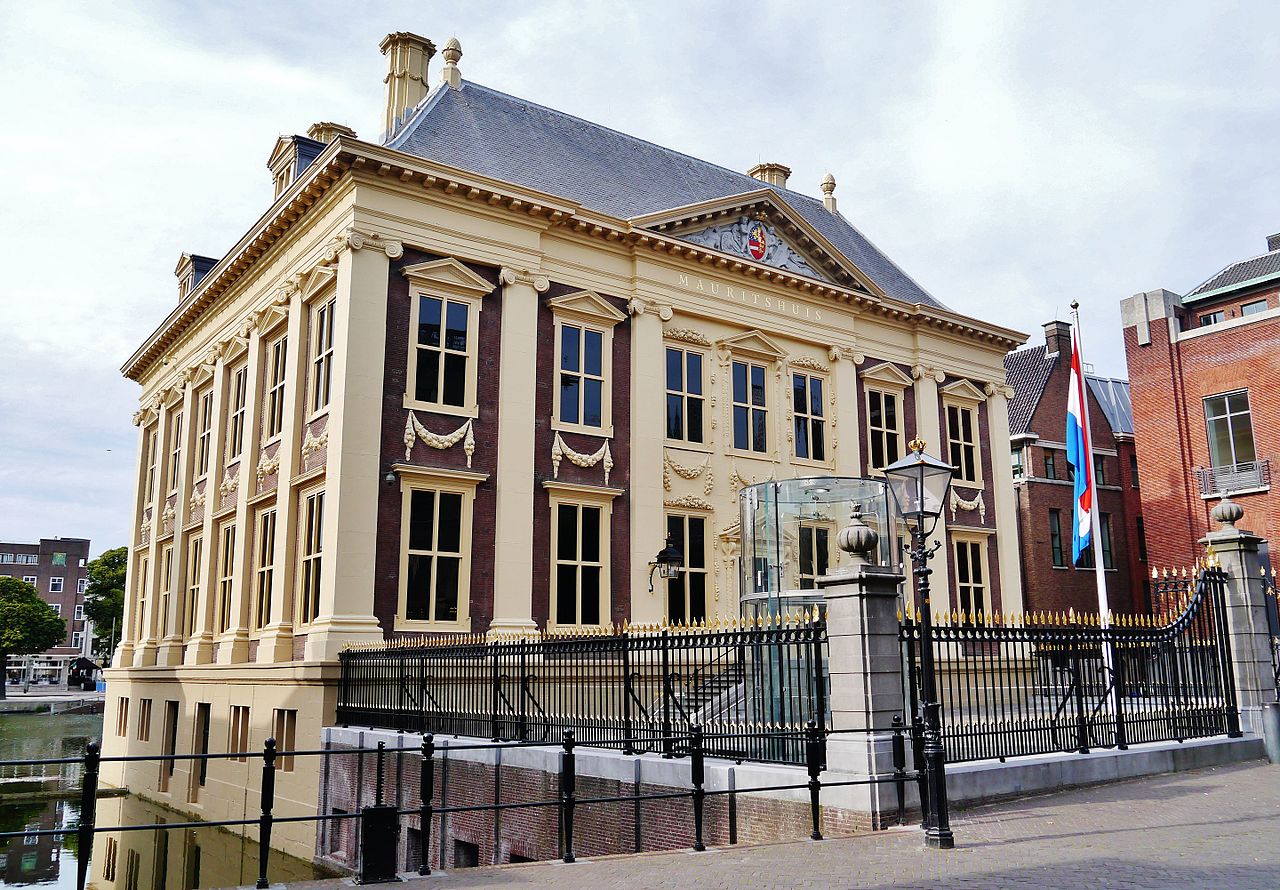 The Mauritshuis (Maurice House) is an art museum in The Hague, Netherlands. The museum houses the Royal Cabinet of Paintings which consists of 841 objects, mostly Dutch Golden Age paintings. The collections contains works by Johannes Vermeer, Rembrandt van Rijn, Jan Steen, Paulus Potter, Frans Hals, Jacob van Ruisdael, Hans Holbein the Younger, and others. Originally, the 17th century building was the residence of count John Maurice of Nassau. It is now the property of the government of the Netherlands and is listed in the top 100 Dutch heritage sites.
The Mauritshuis (Maurice House) is an art museum in The Hague, Netherlands. The museum houses the Royal Cabinet of Paintings which consists of 841 objects, mostly Dutch Golden Age paintings. The collections contains works by Johannes Vermeer, Rembrandt van Rijn, Jan Steen, Paulus Potter, Frans Hals, Jacob van Ruisdael, Hans Holbein the Younger, and others. Originally, the 17th century building was the residence of count John Maurice of Nassau. It is now the property of the government of the Netherlands and is listed in the top 100 Dutch heritage sites.
Binnenhof
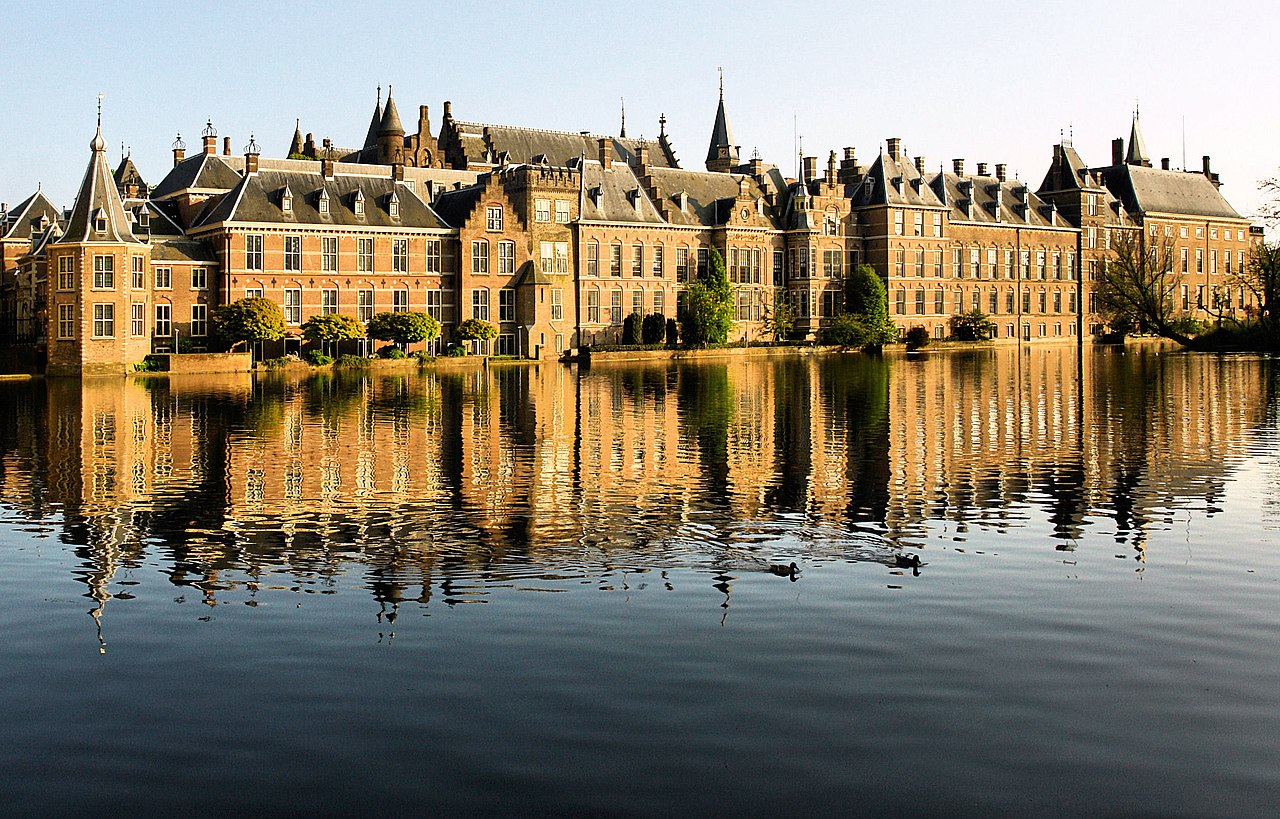 The Binnenhof (Inner Court) is a complex of buildings in the city centre of The Hague, Netherlands, next to the Hofvijver. It houses the meeting place of both houses of the States General of the Netherlands, as well as the Ministry of General Affairs and the office of the Prime Minister of the Netherlands. Built primarily in the 13th century, the Gothic castle originally functioned as residence of the counts of Holland and became the political centre of the Dutch Republic in 1584. It is counted among the Top 100 Dutch heritage sites. The Binnenhof is the oldest House of Parliament in the world still in use.
The Binnenhof (Inner Court) is a complex of buildings in the city centre of The Hague, Netherlands, next to the Hofvijver. It houses the meeting place of both houses of the States General of the Netherlands, as well as the Ministry of General Affairs and the office of the Prime Minister of the Netherlands. Built primarily in the 13th century, the Gothic castle originally functioned as residence of the counts of Holland and became the political centre of the Dutch Republic in 1584. It is counted among the Top 100 Dutch heritage sites. The Binnenhof is the oldest House of Parliament in the world still in use.
Escher in Het Paleis
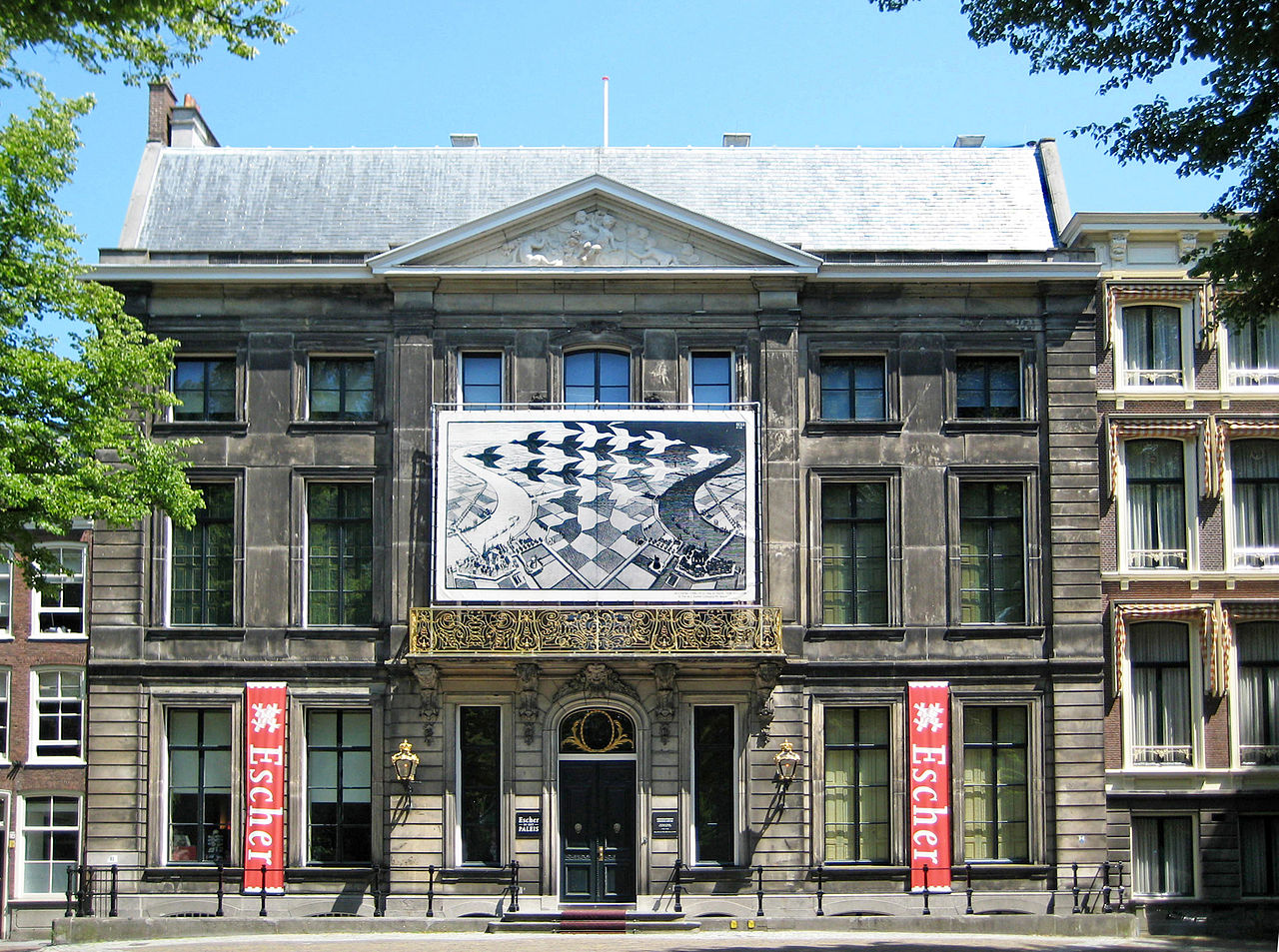 Escher in Het Paleis (Escher in The Palace) is a museum in The Hague, Netherlands, featuring the works of the Dutch graphical artist M. C. Escher. It is housed in the Lange Voorhout Palace since November 2002.In 2015 it was revealed that many of the prints on display at the museum were replicas, scanned from original prints and printed onto the same type of paper used by Escher, rather than original Escher prints as they had been labeled. In the rooms of the museum are fifteen chandeliers made by the Rotterdam artist, Hans van Bentem. The artist designed these especially for the museum, with some references to the work of Escher and the Palace. In the ballroom, a star chandelier is endlessly reflected in the two mirrors. In other rooms there are chandeliers such as a shark, a skull, spiders, and a sea horse.The parquet floor in the Palace was designed in 1991/92 by the American minimal artist Donald Judd on the occasion of the opening of the former Royal palace as an exhibition palace. Judd applied the principle of different colours and geometric patterns to the parquet floor in the Palace.
Escher in Het Paleis (Escher in The Palace) is a museum in The Hague, Netherlands, featuring the works of the Dutch graphical artist M. C. Escher. It is housed in the Lange Voorhout Palace since November 2002.In 2015 it was revealed that many of the prints on display at the museum were replicas, scanned from original prints and printed onto the same type of paper used by Escher, rather than original Escher prints as they had been labeled. In the rooms of the museum are fifteen chandeliers made by the Rotterdam artist, Hans van Bentem. The artist designed these especially for the museum, with some references to the work of Escher and the Palace. In the ballroom, a star chandelier is endlessly reflected in the two mirrors. In other rooms there are chandeliers such as a shark, a skull, spiders, and a sea horse.The parquet floor in the Palace was designed in 1991/92 by the American minimal artist Donald Judd on the occasion of the opening of the former Royal palace as an exhibition palace. Judd applied the principle of different colours and geometric patterns to the parquet floor in the Palace.
Panorama Mesdag
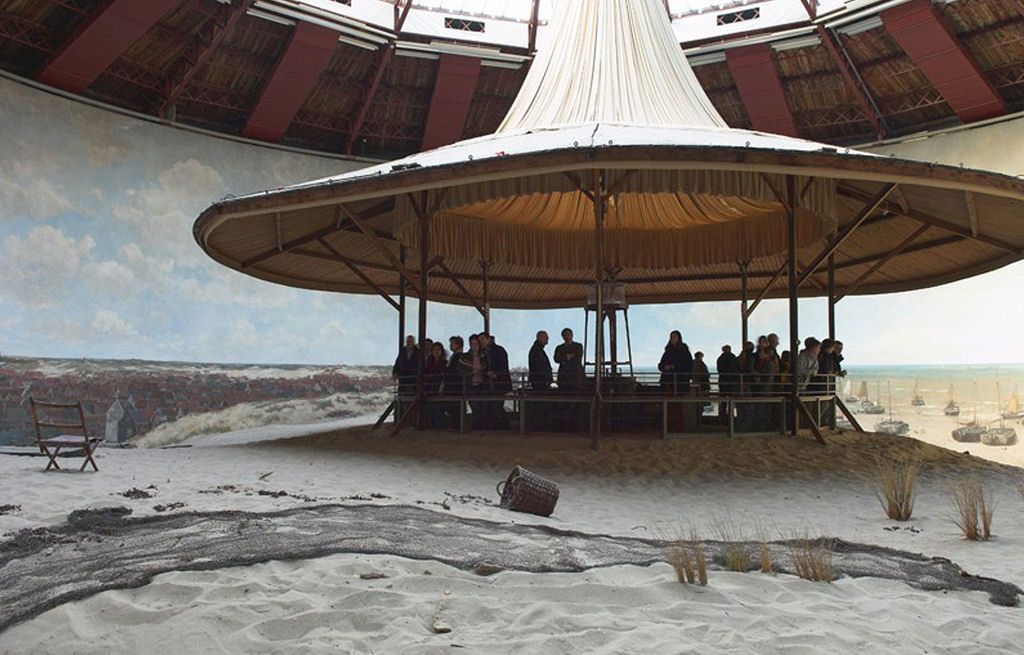 Panorama Mesdag is a panorama by Hendrik Willem Mesdag. Housed in a purpose-built museum in The Hague, the panorama is a cylindrical painting (also known as a Cyclorama) more than 14 metres high and about 40 metres in diameter (120 metres in circumference). From an observation gallery in the centre of the room the cylindrical perspective creates the illusion that the viewer is on a high sand dune overlooking the sea, beaches and village of Scheveningen in the late 19th century. A foreground of fake terrain around the viewing gallery hides the base of the painting and makes the illusion more convincing.
Panorama Mesdag is a panorama by Hendrik Willem Mesdag. Housed in a purpose-built museum in The Hague, the panorama is a cylindrical painting (also known as a Cyclorama) more than 14 metres high and about 40 metres in diameter (120 metres in circumference). From an observation gallery in the centre of the room the cylindrical perspective creates the illusion that the viewer is on a high sand dune overlooking the sea, beaches and village of Scheveningen in the late 19th century. A foreground of fake terrain around the viewing gallery hides the base of the painting and makes the illusion more convincing.
Ridderzaal
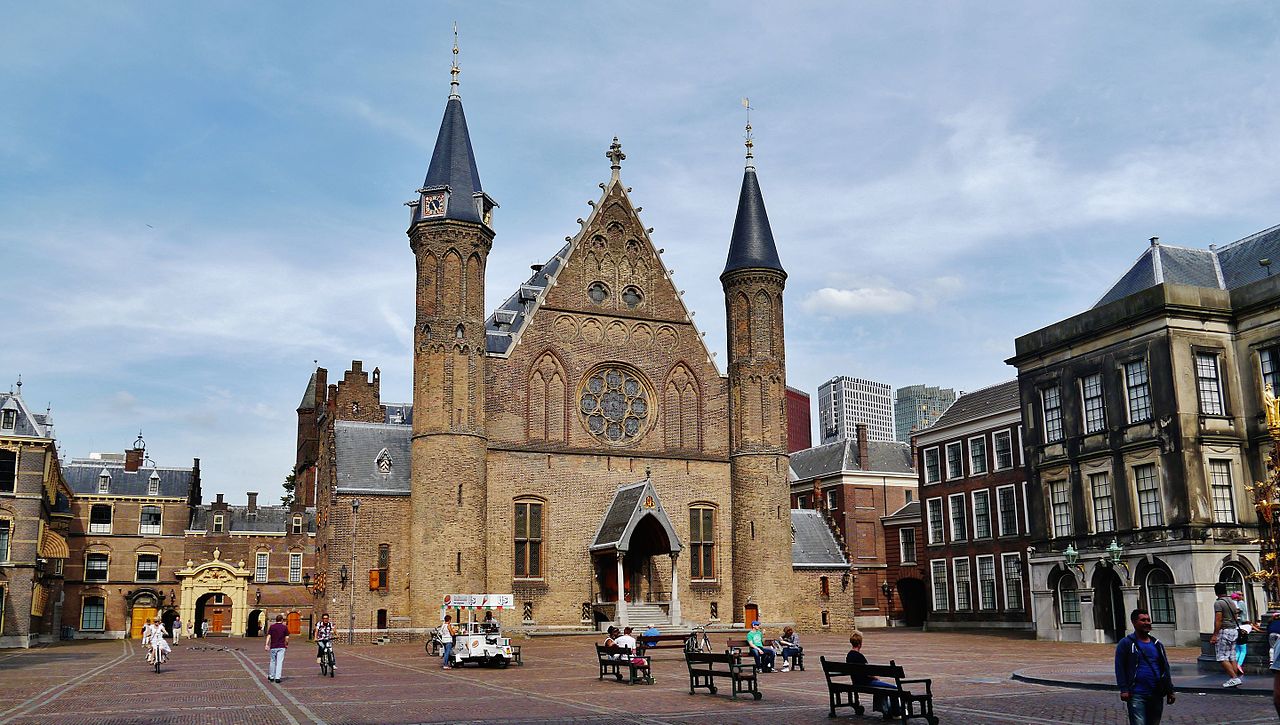 The Ridderzaal (Hall of Knights) is the main building of the 13th century Binnenhof in The Hague, Netherlands. It is used for the state opening of Parliament on Prinsjesdag, when the Dutch monarch drives to Parliament in the Golden Coach and delivers the speech from the throne. It is also used for official royal receptions, and interparliamentary conferences.
The Ridderzaal (Hall of Knights) is the main building of the 13th century Binnenhof in The Hague, Netherlands. It is used for the state opening of Parliament on Prinsjesdag, when the Dutch monarch drives to Parliament in the Golden Coach and delivers the speech from the throne. It is also used for official royal receptions, and interparliamentary conferences.
Gemeentemuseum Den Haag
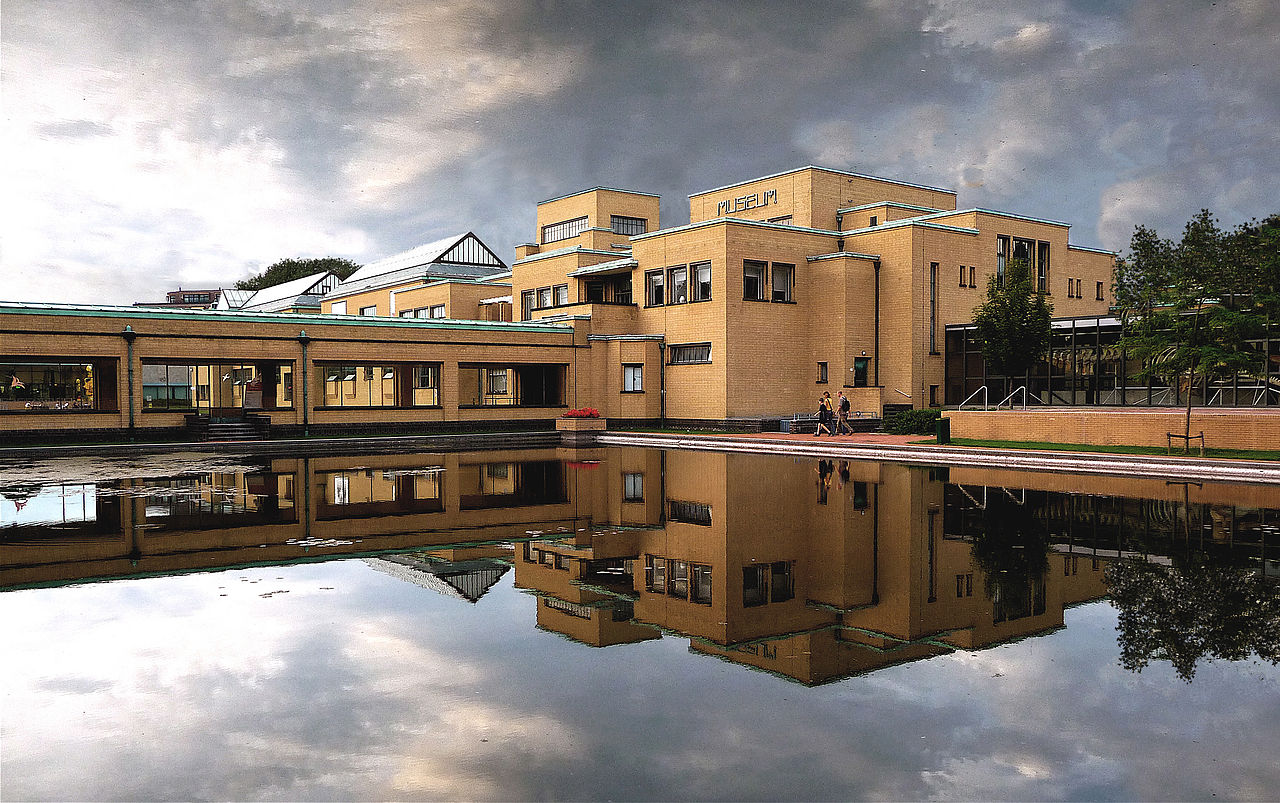 The Gemeentemuseum Den Haag (Municipal Museum) is an art museum in The Hague in the Netherlands, founded in 1866. It is renowned for its large Mondrian collection, the largest in the world. His last work, Victory Boogie-Woogie, is on display here. The museum building was constructed between 1931–1935, designed by the Dutch architect H.P. Berlage. GEM (museum for contemporary art) and Fotomuseum Den Haag (The Hague museum for photography) are part of the Gemeentemuseum, though not housed in the same building and with a separate entrance fee. The museum will be renamed to The Hague Art Museum in 2019.
The Gemeentemuseum Den Haag (Municipal Museum) is an art museum in The Hague in the Netherlands, founded in 1866. It is renowned for its large Mondrian collection, the largest in the world. His last work, Victory Boogie-Woogie, is on display here. The museum building was constructed between 1931–1935, designed by the Dutch architect H.P. Berlage. GEM (museum for contemporary art) and Fotomuseum Den Haag (The Hague museum for photography) are part of the Gemeentemuseum, though not housed in the same building and with a separate entrance fee. The museum will be renamed to The Hague Art Museum in 2019.
Louwman Museum
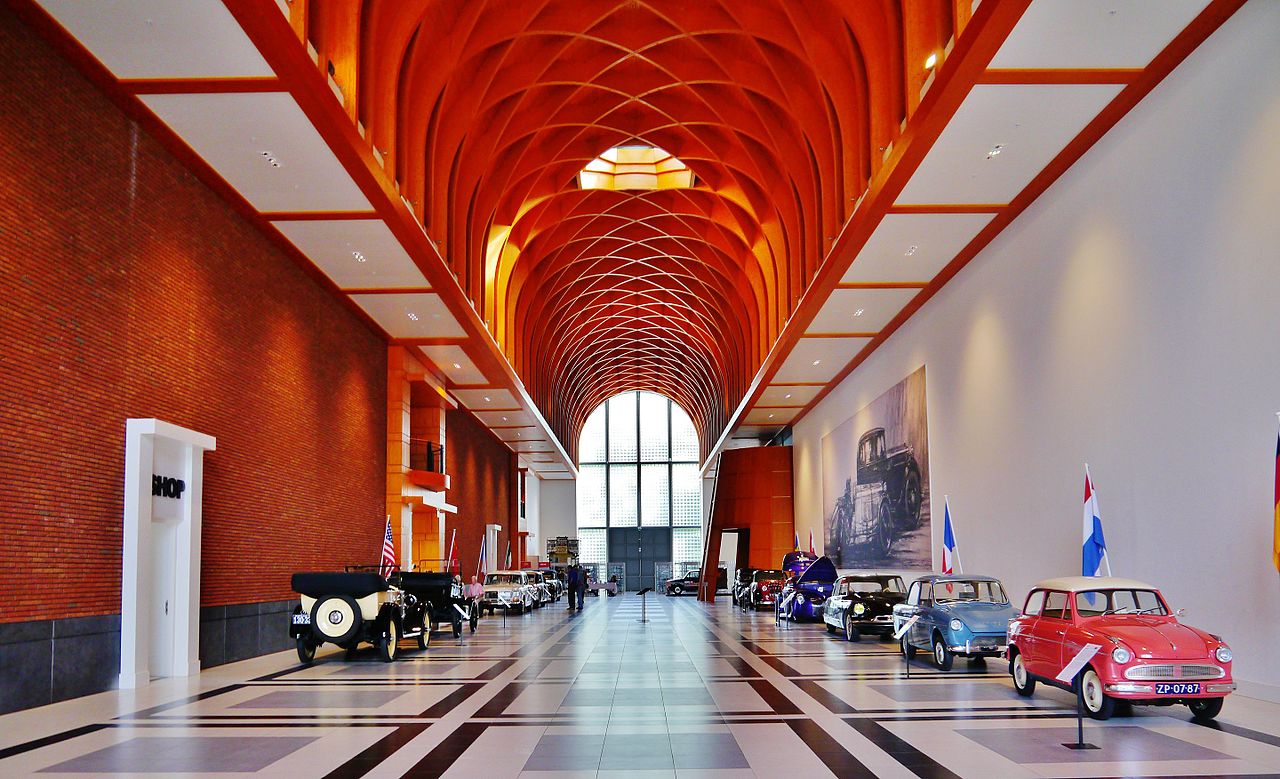 The Louwman Museum is a museum for historic cars, coaches, and motorcycles in The Hague, Netherlands. It is situated on the Leidsestraatweg near the A44 highway. The museum’s former names are “Nationaal Automobiel Museum” and “Louwman Collection”. he Louwman Museum is housed in a building with three floors and over 10,000 m² of exhibition space, on The Hague’s Leidsestraatweg. It was specifically designed as a museum by Michael Graves, an American architect. Landscape architect Louis Baljon designed the layout of the park surrounding the building. The hall when entering the museum is modern, focusing more on architecture than on the cars. The collection is internationally oriented and consists of over 230 automobiles. The museum has the largest collection of cars in the world from 1910 or older. The museum displays a large collection of the current remaining 15 classic cars of the Dutch brand Spyker and the only remaining Eysink (a car-brand from Amersfoort). In the former museum of Raamsdonksveer these Dutch cars used to be displayed at the so-called “Trompenburg Square” with original fence of the original Spyker-factory, dismantled in 1993.
The Louwman Museum is a museum for historic cars, coaches, and motorcycles in The Hague, Netherlands. It is situated on the Leidsestraatweg near the A44 highway. The museum’s former names are “Nationaal Automobiel Museum” and “Louwman Collection”. he Louwman Museum is housed in a building with three floors and over 10,000 m² of exhibition space, on The Hague’s Leidsestraatweg. It was specifically designed as a museum by Michael Graves, an American architect. Landscape architect Louis Baljon designed the layout of the park surrounding the building. The hall when entering the museum is modern, focusing more on architecture than on the cars. The collection is internationally oriented and consists of over 230 automobiles. The museum has the largest collection of cars in the world from 1910 or older. The museum displays a large collection of the current remaining 15 classic cars of the Dutch brand Spyker and the only remaining Eysink (a car-brand from Amersfoort). In the former museum of Raamsdonksveer these Dutch cars used to be displayed at the so-called “Trompenburg Square” with original fence of the original Spyker-factory, dismantled in 1993.
Huys Clingendael
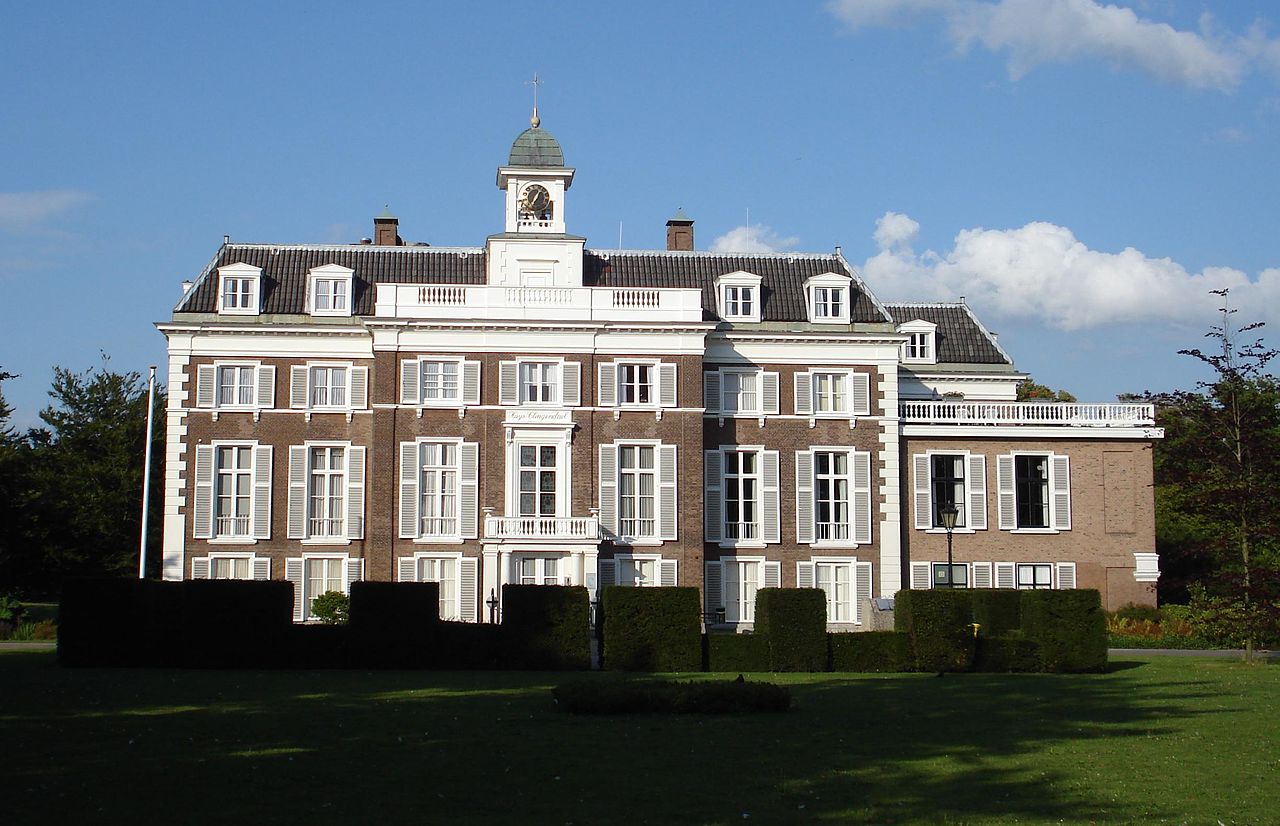 The gardens surrounding the manor house at Landgoed Clingendael date back to the 16th century, creating a peaceful city oasis. The park is open year-round and is free to the public, featuring a large playground and picnic area, as well as a tearoom adjacent to the perfectly landscaped English Garden. The Japanese Garden, the most impressive part of the estate, is only open for a few weeks each spring and fall due to its fragility. It contains a variety of artifacts brought back from Japan by Lady Daisy, the former owner of the estate, who had this garden made in 1910, including stone lanterns, water casks, and tiny wooden bridges.
The gardens surrounding the manor house at Landgoed Clingendael date back to the 16th century, creating a peaceful city oasis. The park is open year-round and is free to the public, featuring a large playground and picnic area, as well as a tearoom adjacent to the perfectly landscaped English Garden. The Japanese Garden, the most impressive part of the estate, is only open for a few weeks each spring and fall due to its fragility. It contains a variety of artifacts brought back from Japan by Lady Daisy, the former owner of the estate, who had this garden made in 1910, including stone lanterns, water casks, and tiny wooden bridges.
Haagse Bos and Huis ten Bosch
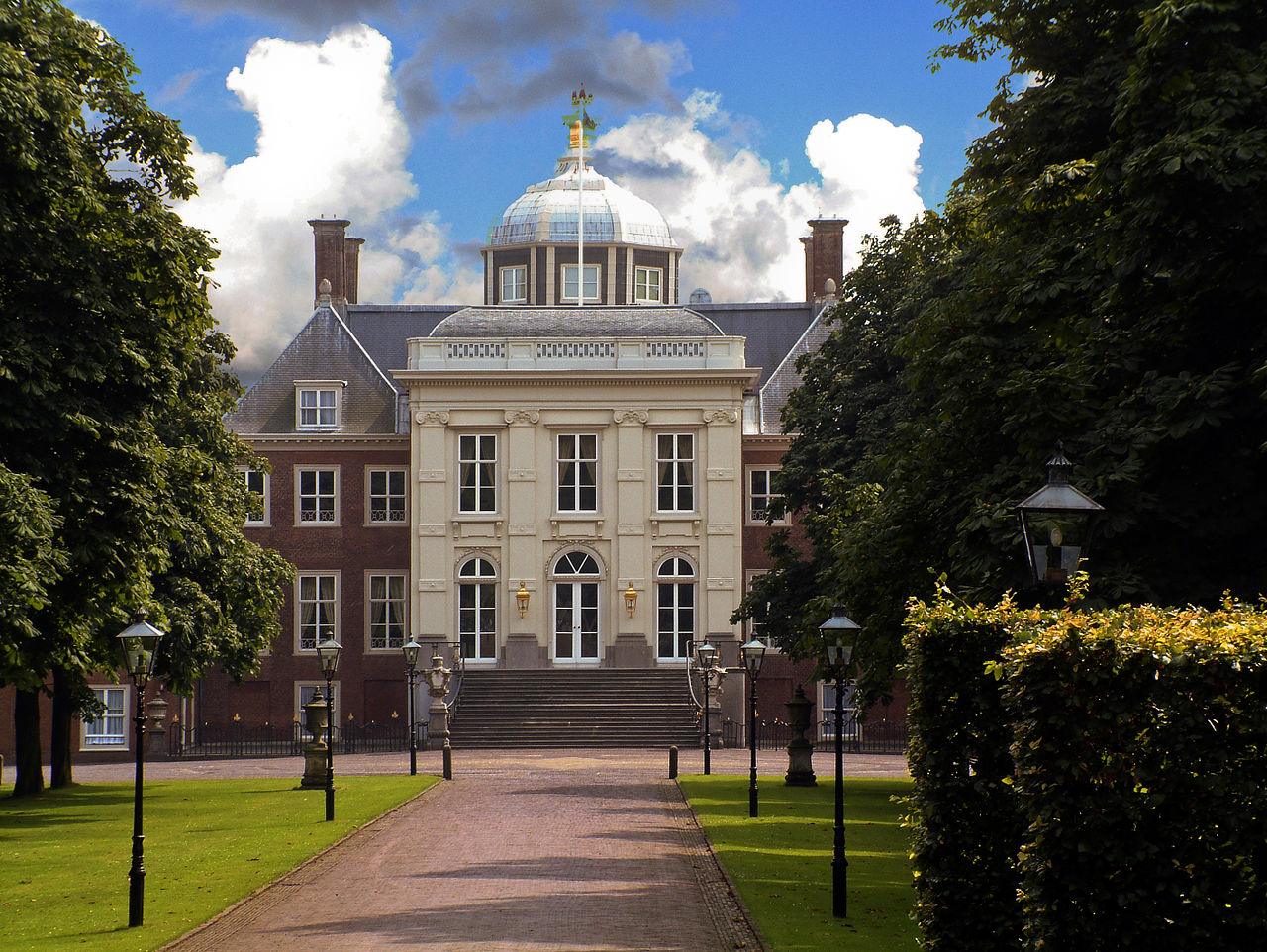 One of The Hague’s prettiest open spaces, Haagse Bos is a two-kilometer-long expanse of parkland noted for its beautiful winding avenues. Extending all the way from the old city center to the boundary of the suburb of Wassenaar, it’s a pleasant way to spend time as you explore one of the country’s oldest forests, protected from deforestation since the Middle Ages. The park’s most notable feature is Huis ten Bosch, a moat-surrounded palace built in 1646 as a royal country residence. Famous as the location of the world’s first international peace conference in 1899, the palace is now home to King Willem-Alexander. While not open to the public, there are fine views of the building from various points around the park. Another palace worth walking around for its fine exterior views is Noordeinde Palace. The best views are from the Noordeinde Palace Gardens (admission is free), which also provides a great view of the Royal Stables, home to the horses used to pull the Royal Coaches.
One of The Hague’s prettiest open spaces, Haagse Bos is a two-kilometer-long expanse of parkland noted for its beautiful winding avenues. Extending all the way from the old city center to the boundary of the suburb of Wassenaar, it’s a pleasant way to spend time as you explore one of the country’s oldest forests, protected from deforestation since the Middle Ages. The park’s most notable feature is Huis ten Bosch, a moat-surrounded palace built in 1646 as a royal country residence. Famous as the location of the world’s first international peace conference in 1899, the palace is now home to King Willem-Alexander. While not open to the public, there are fine views of the building from various points around the park. Another palace worth walking around for its fine exterior views is Noordeinde Palace. The best views are from the Noordeinde Palace Gardens (admission is free), which also provides a great view of the Royal Stables, home to the horses used to pull the Royal Coaches.
Gevangenpoort Museum
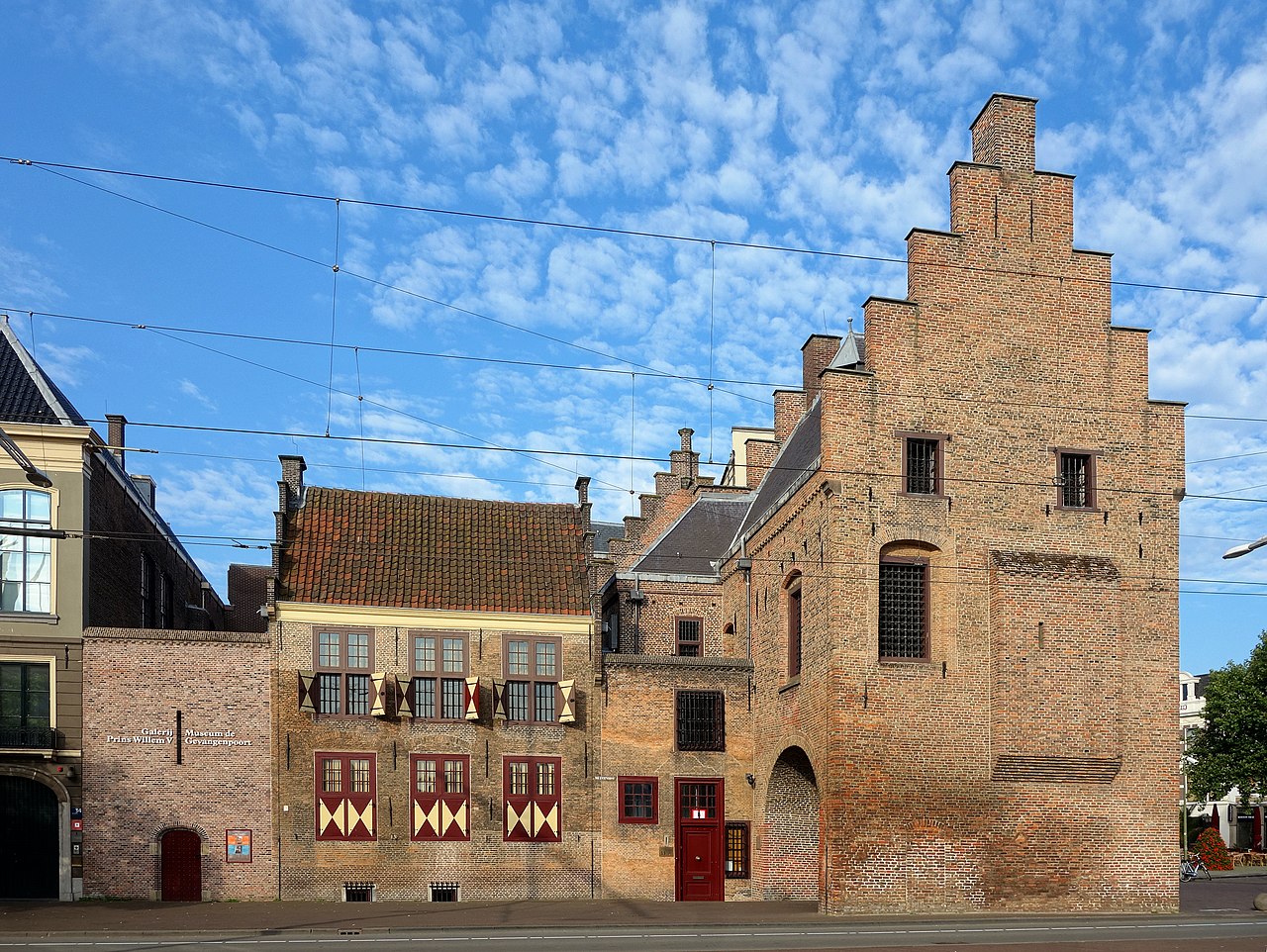 The Gevangenpoort (Prisoner’s Gate) is a former gate and medieval prison on the Buitenhof in The Hague, Netherlands. It is situated next to the 18th-century art gallery founded by William V, Prince of Orange in 1774 known as the Prince William V Gallery. Since 2010, museum visitors can view the restored art gallery that can be reached through a special staircase that connects the two buildings. The collection which hangs here is a modern reconstruction of the original 1774 art cabinet that was situated upstairs above the fencing school. The paintings are again upstairs, hanging crowded together on the walls in the style of the late 18th century. In 1822 the collection (then called Koninklijk Kabinet van Schilderijen te ‘s-Gravenhage) was moved to the Mauritshuis which remains the formal owner of the paintings on display. During restoration activities, highlights of the permanent Mauritshuis collection have been temporarily displayed in the gallery.
The Gevangenpoort (Prisoner’s Gate) is a former gate and medieval prison on the Buitenhof in The Hague, Netherlands. It is situated next to the 18th-century art gallery founded by William V, Prince of Orange in 1774 known as the Prince William V Gallery. Since 2010, museum visitors can view the restored art gallery that can be reached through a special staircase that connects the two buildings. The collection which hangs here is a modern reconstruction of the original 1774 art cabinet that was situated upstairs above the fencing school. The paintings are again upstairs, hanging crowded together on the walls in the style of the late 18th century. In 1822 the collection (then called Koninklijk Kabinet van Schilderijen te ‘s-Gravenhage) was moved to the Mauritshuis which remains the formal owner of the paintings on display. During restoration activities, highlights of the permanent Mauritshuis collection have been temporarily displayed in the gallery.
Grote of Sint-Jacobskerk
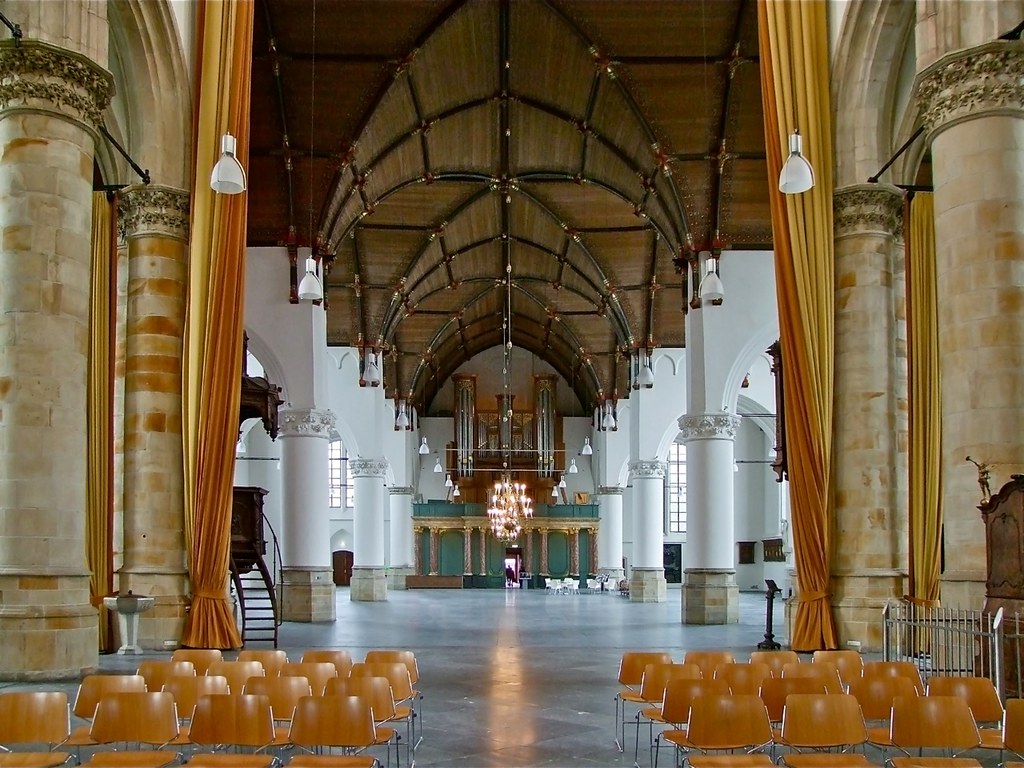 Great or St. James’ Church (Grote Kerk or Sint-Jacobskerk,) is a landmark Protestant church in The Hague, Netherlands. The building is located on the Torenstraat, named for its high tower. Together with the Binnenhof, it is one of the oldest buildings in The Hague. Members of the House of Orange-Nassau have been baptised and married there. The latest are Willem-Alexander of the Netherlands and his daughter Catharina-Amalia, Princess of Orange. The oldest part of the Gothic Grote of Sint-Jacobskerk (Great St. James Church) dates from the 14th century, while newer sections, including the 100-meter-high tower, were added around 1420. Unique in the Netherlands for its hexagonal form, the tower originally served as a lookout (the bell was too big for the tower and can be seen inside the church). A new carillon, one of the largest in the Netherlands with 51 bells, was installed in 1959, and can be visited as part of a tower tour (the views over the city are incredible). Highlights of the beautifully vaulted interior include numerous monuments and grave-slabs, including those of the poet and statesman Constantijn Huygens who died in 1687, and physicist and astronomer Christiaan Huygens, buried here in 1695. Other notable features are the carved wooden pulpit from 1550, the coats of arms of the Knights of the Golden Fleece, a large 19th-century organ, and the stained glass in the choir and north transept.
Great or St. James’ Church (Grote Kerk or Sint-Jacobskerk,) is a landmark Protestant church in The Hague, Netherlands. The building is located on the Torenstraat, named for its high tower. Together with the Binnenhof, it is one of the oldest buildings in The Hague. Members of the House of Orange-Nassau have been baptised and married there. The latest are Willem-Alexander of the Netherlands and his daughter Catharina-Amalia, Princess of Orange. The oldest part of the Gothic Grote of Sint-Jacobskerk (Great St. James Church) dates from the 14th century, while newer sections, including the 100-meter-high tower, were added around 1420. Unique in the Netherlands for its hexagonal form, the tower originally served as a lookout (the bell was too big for the tower and can be seen inside the church). A new carillon, one of the largest in the Netherlands with 51 bells, was installed in 1959, and can be visited as part of a tower tour (the views over the city are incredible). Highlights of the beautifully vaulted interior include numerous monuments and grave-slabs, including those of the poet and statesman Constantijn Huygens who died in 1687, and physicist and astronomer Christiaan Huygens, buried here in 1695. Other notable features are the carved wooden pulpit from 1550, the coats of arms of the Knights of the Golden Fleece, a large 19th-century organ, and the stained glass in the choir and north transept.

